Harpephyllum caffrum
| Botanical Name | Harpephyllum caffrum |
|||||||||||
| Family | Anacardiaceae - The mango family. |
|||||||||||
| Pronunciation | harp-eh-FIL-lum KAF-ra |
|||||||||||
| Common Name(s) |
English: Wild plum; Sour Plum
Afrikaans: Wildepruim; Suurpruim
IsiXhosa: umGwenya; Umgwenyobomvu
IsiZulu: Umgwenya
Sesotho sa Leboa: Mmedibibi; Mothêkêlê
|
|||||||||||
| Plant Group |
|
|||||||||||
| Plant Size |
|
|||||||||||
| Position |
|
|||||||||||
| General Information |
|
|||||||||||
| Specific Information | Harpephyllum caffrum develops a thick rounded crown, making it a good shade tree. It is one of the largest trees found in the sub-tropical forests of KwaZulu-Natal and Mpumalange but somewhat smaller in the drier Eastern Cape areas. The thick roots often snake 8 or more meters along the forest floor. The large, dark green leaves have an interesting sickle shape. The oval, palatable fruits draw a wide variety of animals and birds, among them being monkeys, antelope, bushpigs, bats, turacos (Loeies) and hornbills. |
|||||||||||
| Ad Break | ||||||||||||
| Flowers | ||||||||||||
| Description | sprays of tiny four-petaled flowers |
|||||||||||
| Season |
|
|||||||||||
| Colour |
|
|||||||||||
| Growth Rate |
|
|||||||||||
| Plant Uses |
|
|||||||||||
| Distribution and Habitat | Eastern Cape, KwaZulu-Natal, Mpumalanga and Limpopo, as well as Swaziland, southern Mozambique and Zimbabwe,in riverine forests |
|||||||||||
| Planting Suggestions | Mulch well and water regularly until the tree has clearly settled in, then reduce the frequency of watering if water is scarce. The old method of digging a deep hole and filling it with soil and compost has resulted in many trees failing to thrive, dying, rotting at the base or worse still, falling over in later years due to poor root development. Refer to the following sites for the best method of planting trees: International Society of Arboriculture: New Tree Planting Tree People: Plant the right way For those of you who have a clay problem try: |
|||||||||||
| Medicinal Uses | The bark is used to treat acne and eczema, sprains and bone fractures and for paralysis contracted from walking over an area that has been poisoned through sorcery. The bark is also used for dyeing a mauve or pink colour. The fruit of Harpephyllum caffrum is eaten by birds, animals, insects and humans. The tart fruits are used for making jams and jellies. |
|||||||||||
| Ad Break | ||||||||||||


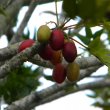
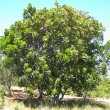
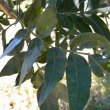
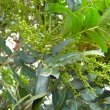
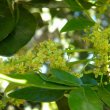
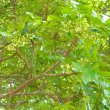
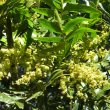
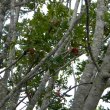


Comments
Harpepephyllum caffrum
What colour is the fruit - red/pink?
Wild plum fruits
Hi Herman
The fruits of the Wild plum trees that I have come across are distinctly red when ripe with an orange-red flesh.
For years I used to get mixed up between Harpephyllum caffra and Eckebergia capensis as the foliage is quite similar. The fruits of Ekebergia capensis however are a pink crimson colour with soft, white to pinkish flesh.
Hope this is of some use.
Kind regards
Lorraine
Size?
How long does it take to grow to +-12 metres? And at what rate does it grow?
Growth rate of Harpephyllum caffra
Hi Ryan
Without knowing where you are, I can only give you a best case scenario.
It is difficult to estimate precisely as rate of growth is dependent on many factors:
Habitat: is this similar to the habitat in which the tree grows naturally?
Soil and feeding: is the soil able to feed the plant and is the tree getting supplementary feeding, mulch etc?
Water: is the plant getting regular, deep watering?
Gwenya is a reasonably adaptable tree. If it is given suitable care with supplementary water and feeding, it can be quite fast growing at up to 1,5m annually. In ideal conditions, it should then reach 12 meters in 8 - 10 years.
Hope this helps.
Regards
Lorraine
hole size
How big must be a hole for a 50l tree? Is the tree suitable for Port St. John's 2nd beach area?
Hi Aphumelele
Hi Aphumelele
As you will see in the information above under the heading Distribution, this species is indigenous to KwaZulu-Natal, and under the heading 'Plant Uses', it states that it is suitable for coastal gardens. This tells you that this species is suitable for your area.
For good planting instructions go to the following sites:
http://www.treepeople.org/plant-right-way
http://tree-planting.com/tree-planting-4.htm
http://www.phytosphere.com/vtf/treeplant.htm
http://www.arborday.org/trees/planting/containerized.cfm
Kind regards
Lorraine
fruiting duration
How long in a season does the Harpephyllum caffrum provide fruit? And how long after flowering does the fruit ripen? Thank you
Fruit of the Gwenya
Hi Ian
Fruit should ripen about 4 or 5 months after flowering, depending on such factors as habitat, climate, rainfall and so on.
I can't find any precise information about how long the fruiting season lasts, but as I recall, the fruits last for about a month.
Kind regards
Lorraine
Wild Plum Tree
Will this tree grow by planting the seeds? How are we to go about this?
Can anybody please help?
poisonous fruits
Are the pips of the harpephyllum caffrum fruits poisonous to dogs
Harpephyllum fruits and pets
Hi John
I can't find any scientific information to support my observations but a large number of these trees are grown in gardens where pets are present, with no reports of the fruits or pips having any affect on dogs. The tree is also not listed among other known poisonous plants for pets. The pips are so hard that they would most likely be passed through the animal intact, as they are with animals in the wild.
Kind regards
Lorraine
MY HARPEPHYLLUM CAFFRUM
Hi I hope you can help after 19 years My Body Corp wants to again cut down or kill my Tree it did break the wall as its only planted 2 meters away but we then cut the roots. I bought our town house because of the Tree it reminds of my Mom who passed away when I was 20 in Rhodesia,the tree has two trunks and two open arms for hugging although I cut them to make the tree grow straight up, its going to kill to see her go What do I do? Mybe some one would want to buy Her? Thank You For listing and any Advice Please HELP xx
A much loved umGwenya
Hi Lynn
Firstly my sincere and abject apologies for not having replied to your comment way back in June.
I am really saddened to read about your predicament and realise that the tree may already have been removed. There is little you could do to save the tree. It is much too old to be moved and ultimately it will simply keep growing .
Have you considered planting another one. It will take a long time before it becomes a problem and perhaps you could place it a bit further from the wall, or even plant it in a giant pot.
I totally understand how you must feel. I lived in the same house in Johannesburg for almost 50 years and we had the most enormous Jacaranda I have ever seen. We spent hours as kids in that tree and then my own children claimed it for climbing and swinging. But it got too big and was hanging over the house and it had to go. At least I was fortunate as it was not removed until I had already left. Just knowing it is not there still leaves an empty little space in my heart.
Warm regards
Lorraine
THANK YOU
Hi Lorrain Well thank you So Happy For Your reply And All The Lovely Info On Our Beautiful UMGWENYA.
Ha We Still Have Our Precious Girl We Have Protected Her In Spirit So We Will See How We Do Day By Day The Body Corp Has Given Up Yippee :)
Lorrain How High Do They Grow Till They Stop Growing?
Thank You So Much And Your Advice And Thoughts Are Very Welcoming Enjoy The Work You Are Doing Its Wonderful.
Kind Regards
Lynn
Height of Umgwenya
Hi Lynn
Happy to hear you still have your tree. It is always difficult to project the height to which a tree will grow. Factors brought into play are climate, soil, water, drought, habitat .... the list goes on. All I can say is that usually trees in gardens remain appreciably smaller than those in their natural habitat, but trees don't stop growing. They may slow down a great deal as they age, but they will still grow.
Kind regards
Lorraine
Wild Plum shape
Hi Lorraine
I live in George, Western Cape. We have tons of Harpephyllum Caffra as street trees in the city and they never seem to do any damage to parking/pavements, but my local nursery is in agreement, that it should be planted as far away from my house as possible. They reckon 5m is sufficient.
My question relates to the size of the tree. Most of the trees in George are not 12m high, even though they were planted decades ago in some areas. My garden is of a medium size, so I wanted to know whether it would be possible to "shape" this tree ever so slightly to not exceed 4/5m? Or at least cut it into some kind of shape, as to not throw a third of my outside garden into shade. Possible at all?
Kind regards
Wild plum shape and size
Hi Louis
First my apologies for my tardy reply.
I agree with your nursery - five meters would be sufficient. As to size, it is unlikely that the wild plum will grow to any great height in your area as this is not its natural habitat. It comes from more subtropical, wetter areas (see Distribution and Habitat above) without the extremes of temperature you have. Also it is a summer rainfall tree so reduced water in summer will make quite a difference in growth.
There are a few problems with trying to limit the growth of a tree:
The more you prune, the more you stimulate the tree into growth.
It is very easy to destroy the natural shape of the tree.
Trees can't be prevented from growing.
My advice is to leave the tree to develop its lovely natural form. As with the street trees, it probably won't grow very big anyway. If and when it becomes a problem, then you can remove or cut back the odd branch that is getting in the way.
I do hope that this information will still be of some use to you.
Kind regards
Lorraine
Discuss this plant
Share knowledge, ask a question or give an experience.